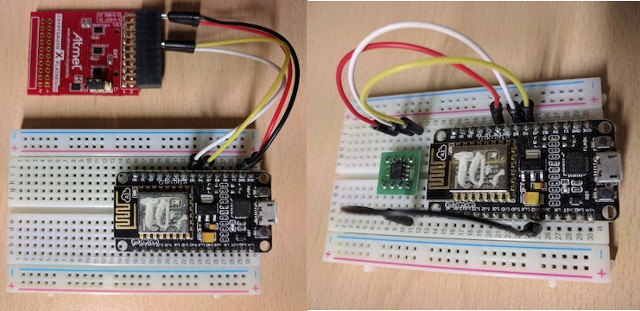There are many examples of Internet of Things projects, but more often than not the implementation is not secure, either because the device is exposed to the Internet with minimum or no security (worst case), or a gateway (hopefully) provides secure connection to the Internet, but the communication between sensor nodes and the gateway in the local network is not secure, due to memory limitation of the nodes, for example it might be challenging to implement security on ESP8266. Mongoose OS is an open source operating system for the Internet of Things developed by Cesanta working on ESP32, ESP8266, STM32, and TI CC3200, and the developers have demonstrated a secure solution with Mongoose OS running on ESP8266 connecting over a TLS connection to AWS IoT (Amazon Web Service IoT) and using TLS credentials stored in Microchip ATECC508A CryptoAuthentication Device.

The addition of ATECC508 chip either using “XplainedPro extension board for crypto products” (ATCRYPTOAUTH-XPRO) or ATECC508A chip itself, is to avoid storing private TLS credentials in NodeMCU’s flash memory, as anybody with physical access to the device could steal private keys and get access to the cloud. ATECC508A is connected via the I2C interface of the target board.
So I guess the crypto chip truly makes sense if you have sensor nodes on the field with information important enough that third parties may be interested in getting access to your sensor to try read your private key from ESP8266’s flash. It costs less than $1, so you may consider it anyway, although you can still get a secure TLS connection between NodeMCU and AWS IoT without it, but it adds another level of security.
Once you are done with the hardware connections, you’ll need to install Mongoose OS on the board, and follow the MQTT + AWS IoT tutorial to get started. Nothing complicated need to be done to leverage the crypto chip, as the command mgos aws-iot-setup should automatically detect ATECC508A chip and use it.

Jean-Luc started CNX Software in 2010 as a part-time endeavor, before quitting his job as a software engineering manager, and starting to write daily news, and reviews full time later in 2011.
Support CNX Software! Donate via cryptocurrencies, become a Patron on Patreon, or purchase goods on Amazon or Aliexpress




